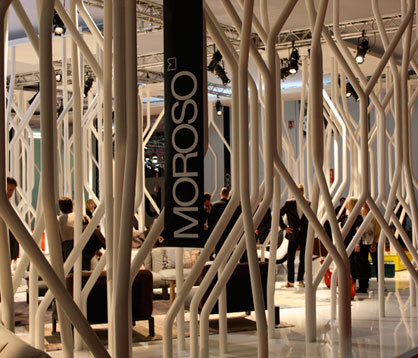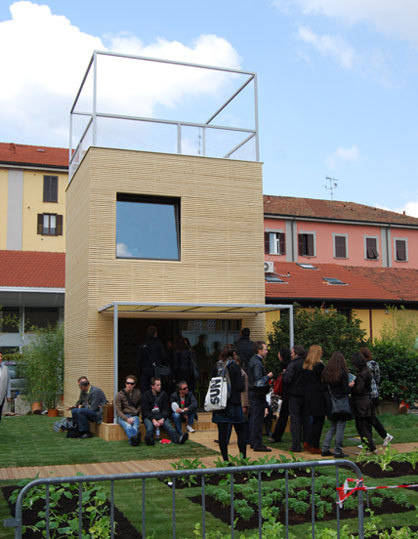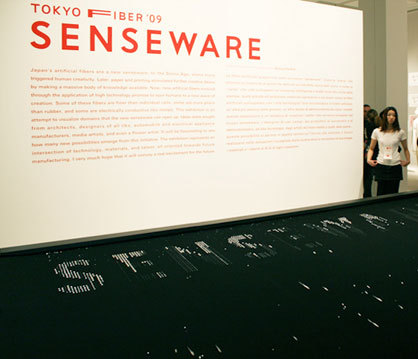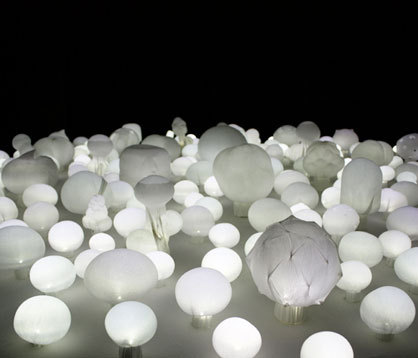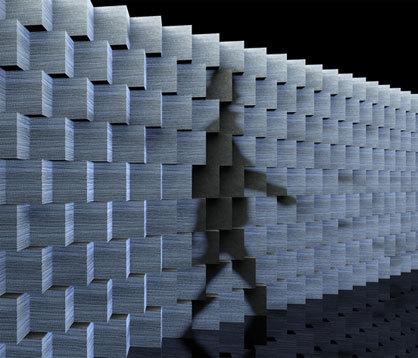Milano....2009
Texto por Nils Becker
Zürich, Suiza
28.04.09
Report from the Salone Internazionale del Mobile fair and the Milan Design Week
In the last three years the unmistakable signs that the world's largest furniture fair had opened its doors in Milan were long queues at the entrance to the site, on the underground or at taxi ranks, gridlock all around the fair, overbooked hotels and frustrated furniture makers who had for years been trying without success to book space for a stand.
Those who had expected that during times of financial crisis the Salone as a major event would this time have to struggle with empty spaces or a sharp fall in the number of exhibitors and visitors in fact experienced exactly the opposite – the mood among the exhibitors was both positive and optimistic. The shaky start to the season made by the furniture fair in Cologne led to massive scratching of heads within the industry. The uncertainty was interpreted as a negative development which would set the trend for the industry, but for Milan this turned out to be an advantage rather than the opposite. The absence of the entire Charme group with the prestigious furniture brands of Cappellini, Cassina, Alias and Poltrona Frau from the fair, brands which had in previous years dominated the site with their overwhelming presence, enabled a redistribution of exhibition space which was good for the Salone. Other well-known brands were able to enlarge the space available to them and improve their product presentation as a result. Some companies were able to present their products on the exhibition site after waiting years for stand space in Milan. It should be mentioned that numerous German producers took advantage of this opportunity.
Another beneficiary from the absence of the Charme group was the so-called 'Fuorisalone', which covers all product presentations with an event-like and artistic character which take place outside of the actual fair site. Fuorisalone originally began as an independent platform for designers and small design labels but nowadays more and more high-profile manufacturers are using locations within the city for their product presentations. An example is the Charme group with its Design Village in the Via Savona. For visitors there is a special attraction in the interplay of architectural space and the objects on exhibition, as well as the chance to explore locations which are not accessible outside of the Milan Design Week. Especially charming is the juxtaposition of installations by established furniture brands and designers or design students. You don't often see commerce and experiment in such close proximity.
A special highlight of this year's furniture fair was the 'Senseware' show, curated by the Japanese designer Kenya Hara, in the Triennale exhibition building. Here well-known architects, designers and artists such as Antonio Citterio, Shigeru Ban, Kengo Kuma, Ross Lovegrove, Nendo and Makoto Azuma used poetic, playful and visionary products and applications to demonstrate the countless possibilities of fabrics made from synthetic fibre.
In spite of a year of economic crisis the Salone in Milan has strengthened its position as the world's leading fair for furniture and furnishings. The main reasons for this development are partly to be found in the fair itself. Combining the furniture fair on the same site with the alternating bi-annual Euroluce and Bagno/Cucine – each a heavyweight in its own right – is something no other event of this kind can offer. However, a decisive role is also played by what is soberly grouped under the term 'Milano Design Week' – a wide range of exhibitions, installations, events and showrooms in top quality with Zona Tortona and the exhibitions in the Triennale building as its highlights. Here dozens of manufacturers, organisations and designers compete with excellent exhibitions in the most interesting locations. And if we observe the development since the origins of the Fuorisalone in 2003 it becomes clear that both the extent and the quality of the exhibitions have increased considerably. No fair within the industry can offer an accompanying programme of this class. And even if the growing number of sales stands in the Zona Tortona has now become reminiscent of a huge market, the 'Senseware' exhibition alone made the trip to Milan worthwhile.
